Table of Contents
List of mobile operating systems
The selection of a mobile operating system is a critical decision for both users and developers. It has a significant impact on the available features, security, app ecosystem, and overall user experience. Each operating system is designed to cater to different preferences, requirements, and device types. As a result, users have a wide range of options to choose from based on their needs.
What is an Operating System?
An Operating System (OS) is a software platform that serves as the foundation for managing and controlling both the hardware and software components of a mobile phone. It acts as a mediator between the user and the underlying hardware, providing a user-friendly interface, and enabling the execution of applications. Below are some of the key functions and components of a mobile operating system:
Why do we need an Operating System?
The operating system of a mobile phone is like its backbone. It ensures that all the hardware and software components work together smoothly, providing a secure, functional, and user-friendly experience. The operating system supports a wide range of tasks and enables modern smartphones to have ever-expanding capabilities.
Here’s an overview of some of the most prominent mobile operating systems and their:
- Android:
- Open Source: Android is an open-source operating system developed by Google. Its open nature allows manufacturers to customize it for their devices.
- Wide Adoption: Android has the largest market share globally, offering a vast ecosystem of apps, services, and devices from various manufacturers.
- Customization: Android is known for its high degree of customization, allowing users to personalize their devices extensively.
- iOS:
- Ecosystem Integration: iOS is developed by Apple exclusively for its devices (iPhone, iPad, iPod Touch). It offers seamless integration with other Apple products and services.
- Security: iOS is known for its strong security features, including regular updates and a closed app ecosystem, which contributes to a more controlled environment.
- Consistent User Experience: Apple controls both the hardware and software, resulting in a consistent and optimized user experience across devices.
- HarmonyOS (Hongmeng OS):
- Cross-Device Compatibility: Developed by Huawei, HarmonyOS is designed to work across a variety of devices, including smartphones, smart TVs, tablets, and other IoT devices.
- Distributed Technology: HarmonyOS focuses on a distributed architecture, allowing devices to collaborate and share resources for improved performance.
- KaiOS:
- Feature Phones and Smart Feature Phones: KaiOS is designed for feature and smart feature phones, offering a more accessible and affordable alternative to smartphones.
- Lite Apps: KaiOS supports lightweight web apps, making it suitable for devices with limited resources.
- Tizen:
- Samsung Devices: Tizen, developed by the Linux Foundation, is used primarily in Samsung devices, including some smartwatches, smart TVs, and budget smartphones.
- Flexibility: Tizen is versatile and can be adapted for various device types, contributing to Samsung’s ecosystem.
- Windows Mobile OS (Discontinued):
- Microsoft Devices: Windows 10 Mobile, developed by Microsoft, was used in devices like Lumia smartphones. However, it has been discontinued, and Microsoft has shifted its focus to other platforms.
- Firefox OS (Discontinued):
- Open Web Standards: Developed by Mozilla, Firefox OS aimed to use open web standards for app development. However, it was discontinued due to challenges in gaining market traction.
List of Operating Systems currently in use:
(1)Android OS: open source platform with customizable apps:

Android OS is an open-source platform that allows for customizable apps. Its openness has allowed it to become the most widely used smartphone operating system worldwide. With a large and active development community, Android offers a wide range of apps and customizations that cater to the diverse needs of its users. Its open nature also makes it a popular choice for developers, who can create and distribute their apps through the Google Play Store or other third-party app markets. Android’s customizable apps and open-source platform make it a popular choice for those seeking a personalized mobile experience.
Introduction to Android OS:
Android is a mobile operating system developed by a consortium of developers known as the Open Handset Alliance and commercially sponsored by Google. Initially released in 2008, Android has grown to become the most widely used mobile operating system globally. It powers a diverse range of devices, including smartphones, tablets, smartwatches, smart TVs, and more.
Features of Android OS:
- Open Source: Android is an open-source operating system, allowing manufacturers to modify and customize the OS to suit their devices. This openness has contributed to its widespread adoption.
- User Interface Customization: Android provides a high level of user interface customization, allowing users to personalize their devices with different launchers, widgets, and themes.
- Multitasking: Android supports multitasking, enabling users to run multiple applications simultaneously. This is facilitated through a recent apps menu and the ability for certain applications to run in the background.
- Google Integration: As a product of Google, Android seamlessly integrates with various Google services, including Gmail, Google Drive, Google Maps, and more. This enhances the overall user experience for those using Google’s ecosystem.
- App Ecosystem: The Google Play Store, the official app marketplace for Android, boasts an extensive collection of applications, ranging from productivity tools to games. This vast app ecosystem is one of Android’s strengths.
- Custom ROMs: Android enthusiasts can install custom ROMs, alternative versions of the Android operating system. This allows for even greater customization and the ability to run the latest Android versions on older devices.
Importance of Android OS:
- Market Dominance: Android holds a significant market share in the global smartphone industry, making it a crucial player in the mobile operating system landscape.
- Device Diversity: Android’s open nature allows a wide range of manufacturers to use the OS, leading to a diverse array of devices catering to various budgets and preferences.
- Innovation: Android has been a platform for innovation, with frequent updates introducing new features, optimizations, and security enhancements.
- Global Accessibility: Android’s affordability and adaptability have made smartphones accessible to a broader global audience, contributing to increased connectivity and digital inclusion.
(2)iOS: Smooth User Experience and Strict App Guidelines:
Apple’s iOS is known for providing a seamless and smooth user experience. The operating system’s user interface is shiny, sleek, and highly intuitive, making it a popular choice for users who value simplicity and ease of use.
One of the defining characteristics of iOS is its strict app guidelines. Apple has a rigorous app review process that ensures all apps meet high quality and functionality standards. This process helps maintain the overall quality and safety of the App Store but can also be frustrating for developers who must adhere to the guidelines.
While some developers view these guidelines as restrictive, they ultimately benefit users by ensuring that the apps they download from the App Store are reliable and secure. IOS offers a great user experience, but developers must be aware of and follow Apple’s strict guidelines.
Introduction to iOS:
iOS is a mobile operating system developed by Apple Inc. It was first introduced in 2007 with the launch of the original iPhone. Since then, iOS has evolved to power a range of Apple devices, including the iPhone, iPad, iPod Touch, Apple Watch, and Apple TV. Known for its sleek design, user-friendly interface, and tight integration with Apple’s hardware, iOS is recognized as one of the leading mobile operating systems.
Features of iOS:
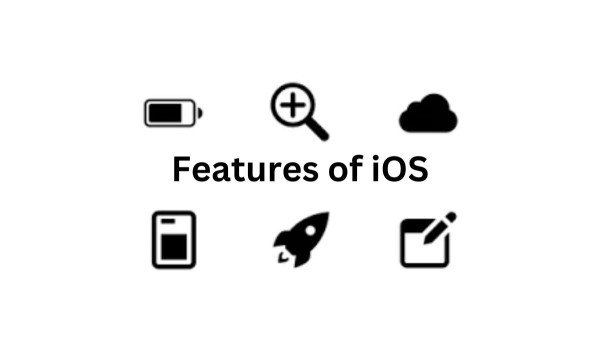
- User Interface and Design: iOS is known for its user-friendly interface, with an emphasis on simplicity and elegance in design.
- App Store: The Apple App Store serves as the authorized platform for iOS applications. It presents a carefully handpicked assortment of apps, games, and utilities, guaranteeing a superior level of quality and security. App developers comply with Apple’s rigorous standards for app approval.
- Security: iOS is renowned for its robust security features. Apple employs a closed ecosystem, tightly controlling both the hardware and software aspects of its devices. Regular security updates and features like Face ID and Touch ID contribute to the platform’s security.
- Siri: Apple’s virtual assistant, Siri, is integrated into iOS, providing users with voice-activated commands for various tasks, including setting reminders, sending messages, and obtaining information.
- Seamless Ecosystem Integration: iOS is designed to work seamlessly with other Apple products and services. iCloud allows users to synchronize data across devices, ensuring a consistent experience across iPhones, iPads, Macs, and more.
- Regular Updates: Apple provides regular iOS updates, introducing new features, enhancements, and security patches. iOS devices typically receive updates simultaneously, ensuring a consistent user experience.
Importance of iOS:
- Brand Loyalty: iOS is exclusive to Apple devices, fostering a strong sense of brand loyalty among users. Customers who appreciate Apple’s design philosophy, build quality, and ecosystem tend to remain within the Apple ecosystem.
- App Quality and Optimization: Developers often prioritize iOS app development due to the platform’s consistent hardware and software environment. This results in high-quality and optimized apps, contributing to a positive user experience.
- Global Market Presence: While iOS may have a smaller market share compared to Android, it remains a dominant player, particularly in high-income markets. The platform’s popularity is fueled by a combination of premium hardware and a reputation for innovation.
- Security and Privacy Focus: Apple prioritizes user privacy and security. App Tracking Transparency and Face ID exemplify Apple’s commitment to safeguarding user data.
Comparison table between IOS and Android:
| Feature | Android OS | iOS (Apple) |
|---|---|---|
| Source Code | Open source | Closed source |
| Customization | High customization options | Limited customization options |
| App Ecosystem | Diverse, Google Play Store | Curated, Apple App Store |
| Device Diversity | Wide range of manufacturers and models | Exclusive to Apple devices |
| User Interface | Varied due to manufacturer overlays | Consistent and uniform across devices |
| Updates | Delayed due to manufacturer and carrier involvement | Simultaneous updates for all supported devices |
| Integration | Varies based on manufacturer and services used | Seamless integration with the Apple ecosystem |
| Security | More susceptible to malware due to open nature | Strong emphasis on security, closed ecosystem |
| Hardware Options | Available at various price points and specifications | Limited to Apple’s product lineup |
| Voice Assistant | Google Assistant | Siri |
| Market Share | Dominates global market share | Holds a significant market share, especially in high-income markets |
Which is better for users?
The choice between Android and iOS depends on individual preferences, needs, and priorities. Both operating systems have strengths and cater to different users.
Android might be better for users who:
- Prefer a wide range of device options from different manufacturers.
- Value high customization options and want to personalize their device extensively.
- Rely on Google services and prefer a more open ecosystem.
- Are budget-conscious, as Android devices are available at various price points.
iOS might be better for users who:
- Prioritize a seamless and consistent user experience across devices.
- Appreciate a closed ecosystem for better security and privacy.
- Use other Apple products, as iOS offers seamless integration with the Apple ecosystem.
- Prefer a more controlled and curated app environment.
The decision of choosing between Android and iOS ultimately depends on individual preferences, brand loyalty, and specific requirements. Both operating systems have evolved significantly over the years, providing many features and delivering a satisfying user experience. It is advisable to take into account factors such as device preference, app ecosystem, customization options, and interoperability with other devices before making a final choice.
List of Operating Systems which were discontinued:
(1)Windows Mobile:
Microsoft has developed a highly user-friendly mobile operating system that enables a seamless and productive desktop experience for its Windows users. The system supports multiple apps, allowing users to easily navigate through various applications and perform tasks with ease, making it an excellent choice for those who prioritize productivity and usability.
Introduction to Windows OS for Mobile:
Windows OS for mobile refers to the mobile operating system developed by Microsoft for smartphones and tablets. Microsoft introduced various versions of Windows Mobile, Windows Phone, and later Windows 10 Mobile. However, as of my last knowledge update in January 2022, Microsoft has shifted its focus away from the mobile operating system market, discontinuing Windows 10 Mobile and ending support.
Features of Windows OS for Mobile:
- Live Tiles: One of the unique features of Windows Phone is its Live Tiles. These tiles on the home screen update dynamically and provide real-time information without requiring the user to open an app.
- Metro UI Design: The user interface of Windows Phone, also known as Metro UI, was characterized by its modern and minimalist design. It aimed to provide a visually appealing and user-friendly experience.
- Office Integration: Windows OS for Mobile had seamless integration with Microsoft Office applications, providing users with a familiar environment for productivity tasks on the go.
- Cortana: Windows Phone integrated Microsoft’s virtual assistant, Cortana, offering voice commands, reminders, and personalized assistance.
- Universal Windows Platform (UWP): With the introduction of Windows 10 Mobile, Microsoft aimed to create a unified app platform across various Windows devices, allowing developers to create apps that could run on both PCs and mobile devices.
Importance of Windows OS for Mobile:
- Office Productivity: Windows OS for Mobile emphasized productivity, leveraging Microsoft’s strengths in office applications. Users could seamlessly work with Word, Excel, PowerPoint, and other Office tools on their mobile devices.
- Integration with Windows Ecosystem: For users already invested in the Windows ecosystem, including Windows PCs and tablets, Windows OS for Mobile provided integration and synchronization of data through OneDrive and other Microsoft services.
- Enterprise Features: Windows Phone targeted enterprise users, offering security features and compatibility with Microsoft’s enterprise solutions.
Comparison table between IOS and Android and Windows OS:
| Feature | Android OS | iOS (Apple) | Windows OS for Mobile (Discontinued) |
|---|---|---|---|
| Source Code | Open source | Closed source | Closed source |
| Customization | High customization options | Limited customization options | Limited customization options (Discontinued) |
| App Ecosystem | Diverse, Google Play Store | Curated, Apple App Store | Limited, Windows Store (Discontinued) |
| Device Diversity | Wide range of manufacturers/models | Exclusive to Apple devices | Varied (Discontinued) |
| User Interface | Varied due to manufacturer overlays | Consistent and uniform across devices | Metro UI design (Discontinued) |
| Updates | Dependent on manufacturers/carriers | Simultaneous updates for all supported devices | Discontinued, no ongoing updates |
| Integration | Varies based on manufacturer/services used | Seamless integration with the Apple ecosystem | Integration with Windows ecosystem (Discontinued) |
| Security | More susceptible to malware | Strong emphasis on security, closed ecosystem | Varied security measures (Discontinued) |
| Voice Assistant | Google Assistant | Siri | Cortana (Discontinued) |
| Market Share | Dominates global market share | Holds a significant market share, especially in high-income markets | Limited market share (Discontinued) |
Which is better for users?
When it comes to selecting a mobile operating system, the decision between Android, iOS, and Windows OS will depend on individual preferences, needs, and priorities. However, it’s worth noting that Windows OS for Mobile is no longer actively developed or supported, so it’s not a current option for users looking for a mobile operating system.
It’s important to note that the market dynamics may change, and new developments. Users are encouraged to consider the latest information, trends, and their personal preferences when choosing a mobile operating system. As of the last update, Android and iOS remain the primary choices for users seeking a mobile OS.
(4)BlackBerry OS: Security-Focused with Physical Keyboard:
BlackBerry OS was a mobile operating system that was developed by BlackBerry Limited (previously known as Research In Motion) for their lineup of smartphones. This platform was recognized for its emphasis on security, with attributes such as end-to-end encryption and the ability to remotely delete data from lost or stolen devices.
BlackBerry OS is known for its notable feature of having a physical keyboard on most devices. This particular attribute distinguishes BlackBerry from many other smartphones available in the market. It is extremely popular among business professionals and those who prefer a tactile typing experience.
Introduction to BlackBerry OS:
BlackBerry OS, which was previously known as the BlackBerry Operating System, was created by BlackBerry Limited (formerly Research In Motion or RIM). It became famous for its use on BlackBerry smartphones, which were renowned for their physical keyboards, secure communication features, and strong emphasis on business and enterprise use.
BlackBerry OS also offers several other features, including:
- Physical Keyboards: BlackBerry devices were known for their physical QWERTY keyboards that provided users with a tactile typing experience.
- Secure Communication: BlackBerry OS was known for its strong security features, including end-to-end encryption for messages and emails. This made it a popular choice for businesses and government organizations.
- BBM (BlackBerry Messenger): BBM was a messaging service exclusive to BlackBerry users that allowed them to communicate in real-time via instant messaging and group chats.
- Push Email: BlackBerry was among the first to provide push email, enabling real-time email reception without manual refresh.
- Business-Focused Features: BlackBerry OS was designed for business professionals, featuring enterprise-level security, device management capabilities, and compatibility with BlackBerry Enterprise Server (BES).
Importance of BlackBerry OS:
- Enterprise Usage: BlackBerry devices were widely adopted by businesses and government agencies due to their focus on security and business-oriented features.
- Secure Communication: BlackBerry’s reputation for secure communication contributed to its popularity in sectors where data privacy and security were paramount.
- Physical Keyboards: The presence of physical keyboards on many BlackBerry devices appealed to users who preferred tactile typing over virtual keyboards.
Comparison table between IOS and Android and BlackBerry OS:
| Feature | Android OS | iOS (Apple) | BlackBerry OS (Legacy) |
|---|---|---|---|
| Source Code | Open source | Closed source | Closed source |
| Customization | High customization options | Limited customization options | Limited customization options |
| App Ecosystem | Diverse, Google Play Store | Curated, Apple App Store | Limited, BlackBerry App World (Legacy) |
| Device Diversity | Wide range of manufacturers and models | Exclusive to Apple devices | Limited variety (Legacy) |
| User Interface | Varied due to manufacturer overlays | Consistent and uniform across devices | Distinctive BlackBerry UI (Legacy) |
| Updates | Dependent on manufacturers and carriers | Simultaneous updates for all supported devices | Limited updates (Legacy) |
| Integration | Varies based on manufacturer and services used | Seamless integration with the Apple ecosystem | Business and enterprise integration (Legacy) |
| Security | More susceptible to malware due to open nature | Strong emphasis on security, closed ecosystem | Strong emphasis on security (Legacy) |
| Voice Assistant | Google Assistant | Siri | Limited or none (Legacy) |
| Market Share | Dominates global market share | Holds a significant market share, especially in high-income markets | Declined market share (Legacy) |
Which is better for users?
Choosing the best operating system depends on individual preferences, needs, and priorities. BlackBerry OS (Legacy) is no longer actively supported or recommended for new users, so the focus here will primarily be on Android and iOS.
It’s important to note that BlackBerry OS (Legacy) is not a viable option for new users, and BlackBerry has transitioned to using Android on its devices. Therefore, when considering a smartphone today, users generally choose between Android and iOS based on their specific needs, brand preferences, and desired features. Android and iOS have matured over the years, offering robust features and a positive user experience.
(5)Bada OS:
Bada (which means “ocean” in Korean) is an OS developed by Samsung for smartphones and tablets. It was first introduced in 2009 and was used in several Samsung devices until it was discontinued in 2013. Bada OS offers a range of features including:
Introduction to Bada OS:
Bada OS was Samsung’s proprietary mobile operating system designed for a range of devices, including smartphones, feature phones, and smart TVs. The word “Bada” is Korean for “ocean,” symbolizing a vast and open platform.
Features of Bada OS:
- Touch Interface: Bada OS featured a touch-based user interface, allowing users to interact with their devices through gestures and taps.
- Widget Support: Bada OS supported customizable widgets, enabling users to personalize their home screens with various information and shortcuts.
- Multi-Tasking: Bada OS allowed users to run multiple applications simultaneously, supporting basic multitasking functionality.
- Social Hub: Bada OS included a Social Hub that integrated social networking services and messaging platforms into a unified interface for convenient communication.
- Samsung Apps Store: Like other mobile operating systems, Bada had an app store called Samsung Apps where users could download and install apps.
- Web Browser: Bada OS included a web browser for internet browsing, providing users with access to online content.
Importance of Bada OS:
- Market Expansion: Samsung introduced Bada OS to expand its reach in the mobile market and reduce dependence on other operating systems.
- Customization: Bada OS offered users a certain level of customization through widgets and personalized settings.
- Integration with Samsung Services: Bada OS was designed to integrate with Samsung’s ecosystem, including Samsung Apps and other services offered by the company.
Discontinuation:
Samsung officially discontinued Bada OS in 2013. The company decided to merge Bada with the Linux-based Tizen OS, which has been used in various Samsung devices, including smart TVs, smartwatches, and some IoT (Internet of Things) devices.
In conclusion, Bada OS was an ambitious attempt by Samsung to establish its presence in the mobile operating system market. However, due to fierce competition and the growing dominance of Android and iOS, Samsung decided to discontinue Bada OS and transition to other operating systems like Tizen for specific device categories. As of the latest information available to me, Bada OS is no longer in use, and users generally choose between Android and iOS for their mobile devices.
Comparison table between IOS and Android and Bada OS :
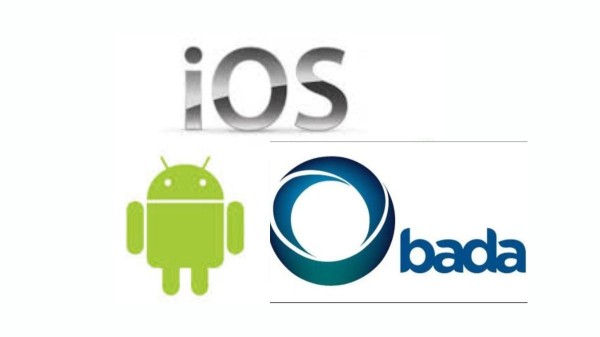
Certainly! Here is a formatted table based on the provided information:
| Feature | Android OS | iOS (Apple) | Bada OS (Discontinued) |
|---|---|---|---|
| Source Code | Open source | Closed source | Closed source |
| Customization | High customization options | Limited customization options | Moderate customization options (Discontinued) |
| App Ecosystem | Diverse, Google Play Store | Curated, Apple App Store | Limited, Samsung Apps (Discontinued) |
| Device Diversity | Wide range of manufacturers and models | Exclusive to Apple devices | Limited variety (Discontinued) |
| User Interface | Varied due to manufacturer overlays | Consistent and uniform across devices | Touch-based UI (Discontinued) |
| Updates | Dependent on manufacturers and carriers | Simultaneous updates for all supported devices | Discontinued, no ongoing updates |
| Integration | Varies based on manufacturer and services used | Seamless integration with Apple ecosystem | Integration with Samsung services (Discontinued) |
| Security | More susceptible to malware due to open nature | Strong emphasis on security, closed ecosystem | Varied security measures (Discontinued) |
| Voice Assistant | Google Assistant | Siri | Limited or none (Discontinued) |
| Market Share | Dominates global market share | Holds a significant market share, especially in high-income markets | Discontinued, limited market share |
Which is better for users?
While both Android and iOS have their strengths, the “better” choice depends on individual preferences, brand loyalty, and specific needs. Users should consider factors such as device preference, app ecosystem, customization options, and integration with other devices when making a decision. As Bada OS is no longer relevant in the current market, it’s not considered a viable option for users.
6) Tizen OS:
Tizen OS is an open-source operating system developed by the Linux Foundation, specifically designed for smart devices including smartphones, smartwatches, and smart TVs. The platform offers a range of features, including intuitive user interfaces, multi-tasking capabilities, and support for web and native apps. Tizen OS is known for its flexibility and scalability, allowing it to be adapted to different types of devices with varying hardware and software requirements. Additionally, the OS provides seamless integration with other Linux-based systems, making it a popular choice for developers and manufacturers in the tech industry.
Introduction to Tizen OS for Mobile:
Tizen is an open-source operating system developed by the Linux Foundation and supported by the Tizen Association, which includes major industry players like Samsung, Intel, and others. Tizen OS is designed for a variety of devices, including smartphones, smartwatches, smart TVs, and Internet of Things (IoT) devices. In the context of mobile devices, Samsung has been a prominent adopter of Tizen OS.
Features of Tizen OS for Mobile:
- Open Source: Tizen OS is an open-source platform, that allows developers to access and modify the source code. This openness encourages collaboration and innovation within the development community.
- Versatility: Tizen OS is designed to run on various device types, providing a consistent and versatile platform. It supports smartphones, wearables, smart TVs, and other IoT devices.
- HTML5 and Web Standards: Tizen OS emphasizes the use of web standards, especially HTML5, making it easier for developers to create applications using familiar web technologies.
- Samsung Services Integration: Samsung has implemented Tizen OS in some of its smartwatches and smart TVs. The operating system integrates with Samsung services, creating a unified ecosystem for users.
- Performance: Tizen OS is known for its efficiency and performance. It aims to provide a smooth user experience even on devices with more modest hardware specifications.
- App Ecosystem: While the Tizen app ecosystem may not be as extensive as Android’s or iOS’s, it has been growing steadily, and Samsung actively encourages developers to create applications for Tizen-based devices.
Importance of Tizen OS for Mobile:
- Diversification: Tizen OS offers Samsung an alternative to Android for certain device categories, allowing the company to diversify its portfolio.
- Control over Ecosystem: By developing its operating system, Samsung gains more control over the software stack, including the user interface and user experience, fostering brand consistency.
- Efficiency: Tizen’s focus on web standards and performance efficiency can be advantageous for devices with varying hardware capabilities.
Conclusion:
The choice between Tizen OS, Android, and iOS depends on user preferences, device requirements, and ecosystem considerations. Tizen OS is a viable option for users who appreciate Samsung devices and want an alternative to Android. It offers a balance between open-source flexibility and integration with Samsung’s ecosystem. However, for users looking for a broader app ecosystem and a well-established platform, Android and iOS remain the primary choices.
Comparison table between IOS and Android and Tizen OS:
Certainly! Here is a formatted table based on the provided information:
| Feature | Android OS | iOS (Apple) | Tizen OS |
|---|---|---|---|
| Source Code | Open source | Closed source | Open source |
| Customization | High customization options | Limited customization options | Moderate customization options |
| App Ecosystem | Diverse, Google Play Store | Curated, Apple App Store | Growing, Samsung Galaxy Store (Tizen Store) |
| Device Diversity | Wide range of manufacturers and models | Exclusive to Apple devices | Samsung devices and select others for specific categories |
| User Interface | Varied due to manufacturer overlays | Consistent and uniform across devices | Samsung’s TouchWiz or One UI (on smartphones) |
| Updates | Dependent on manufacturers and carriers | Simultaneous updates for all supported devices | Dependent on manufacturers and carriers |
| Integration | Varies based on manufacturer and services used | Seamless integration with Apple ecosystem | Integration with Samsung services and ecosystem |
| Security | More susceptible to malware due to open nature | Strong emphasis on security, closed ecosystem | Security emphasis, dependent on implementation |
| Voice Assistant | Google Assistant | Siri | Bixby (Samsung’s voice assistant) |
| Market Share | Dominates global market share | Holds a significant market share, especially in high-income markets | Niche market share in specific device categories |
Note: Tizen OS has seen more adoption in specific device categories, such as smartwatches and some Samsung TVs, rather than smartphones. The market share information reflects its status in the broader market.
Which is better for users?
The choice between Android, iOS, and Tizen OS depends on individual preferences, device requirements, and ecosystem considerations.
Android might be better for users who:
- Prefer a wide range of device options from different manufacturers.
- Value high customization options and want to personalize their device extensively.
- Rely on Google services and prefer a more open ecosystem.
- Are budget-conscious, as Android devices are available at various price points.
iOS might be better for users who:
- Prioritize a seamless and consistent user experience across devices.
- Appreciate a closed ecosystem for better security and privacy.
- Use other Apple products, as iOS offers seamless integration with the Apple ecosystem.
- Prefer a more controlled and curated app environment.
Tizen OS might be better for users who:
- Prefer Samsung devices and want an alternative to Android.
- Value a balance between open-source flexibility and integration with Samsung’s ecosystem.
- Primarily use Samsung devices for specific categories like smartwatches or smart TVs.
Ultimately, the “better” choice depends on the user’s specific needs, brand preferences, and desired features. Android and iOS continue to dominate the smartphone market, offering a wide range of devices and a mature app ecosystem. Tizen OS, while gaining ground in specific device categories, may be a suitable choice for users who appreciate Samsung’s devices and want to explore an alternative operating system.
(7) Firefox OS/ Kai OS:
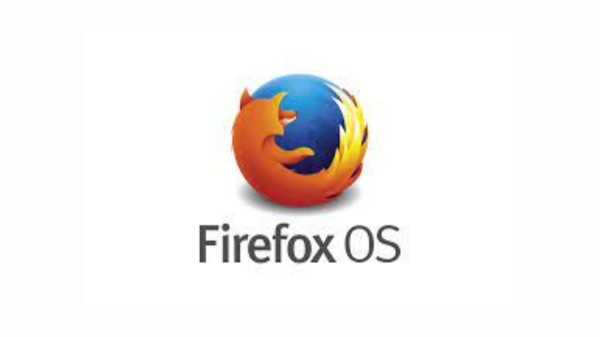
Firefox OS, now known as KaiOS, is a mobile operating system that brings affordable smartphone functionality to basic phones. It is developed by the Linux Foundation and is designed to be lightweight and efficient, making it an ideal choice for budget-friendly devices.
KaiOS comes with essential apps like a web browser, messaging, and contacts, as well as support for popular apps such as WhatsApp, Facebook, and YouTube. Despite being a lightweight OS, it still offers a smooth and user-friendly experience, making it accessible to users who are new to smartphones.
One of the key advantages of KaiOS is its affordability. It allows users who may not have been able to afford a smartphone before to access the internet and communication tools at a lower cost. The OS also has a strong focus on offline functionality, ensuring that users can still access important features even without a stable internet connection.
In summary, Firefox OS (KaiOS) offers a cost-effective solution for basic phones to provide affordable smartphone functionality. It is an ideal choice for users who want to access essential apps and communication tools without breaking the bank.
Introduction to KaiOS:
KaiOS is a mobile operating system developed by KaiOS Technologies, a company based in San Diego, California. KaiOS is designed to bring smartphone-like functionalities to feature phones, catering to users in emerging markets and those who seek a more simplified and affordable mobile experience. Unlike traditional feature phone operating systems, KaiOS supports third-party apps, providing a more versatile user experience.
Features of KaiOS:
- Smart Feature Phones: KaiOS is known for powering smart feature phones, which are basic phones with enhanced functionalities such as app support, internet browsing, and app stores.
- App Support: KaiOS supports a variety of third-party apps, including popular applications like WhatsApp, YouTube, Google Maps, and Facebook. This app support distinguishes it from traditional feature phone platforms.
- HTML5-Based: KaiOS relies on HTML5 as its primary development language, making it easier for developers to create apps using web technologies. This approach contributes to a cost-effective and efficient development process.
- Affordability: KaiOS is designed to run on low-cost devices, making it an attractive option for users in emerging markets who may not have access to more expensive smartphones.
- Lite Versions of Apps: Many apps on KaiOS are optimized as “lite” versions, ensuring that they run smoothly on devices with limited processing power and memory.
- Voice Control: Some KaiOS devices feature voice control functionalities, allowing users to perform certain actions using voice commands.
Importance of KaiOS:
- Digital Inclusion: KaiOS aims to bridge the digital divide by bringing smart functionalities to affordable feature phones. This is particularly crucial in regions where smartphone adoption may be limited due to economic factors.
- Connectivity: KaiOS enables users to access the internet, use social media, and communicate through messaging apps, even on basic devices. This enhances connectivity for users who might not have access to advanced smartphones.
- Market Expansion: KaiOS has gained popularity in regions like India and Africa, contributing to its role in expanding the overall mobile market and providing affordable options to a wider demographic.
Conclusion:
KaiOS plays a significant role in providing a smart feature phone experience, especially in regions with a focus on affordability and digital inclusion. While it may not directly compete with Android and iOS in the high-end smartphone market, KaiOS serves a unique niche by offering a cost-effective solution for users who prioritize basic functionality and accessibility.
Comparison table between ios and Android and KaiOS:
| Feature | Android OS | iOS (Apple) | KaiOS |
|---|---|---|---|
| Source Code | Open source | Closed source | Proprietary |
| Customization | High customization options | Limited customization options | Limited customization options |
| App Ecosystem | Diverse, Google Play Store | Curated, Apple App Store | Growing, KaiStore (Limited app selection) |
| Device Diversity | Wide range of manufacturers and models | Exclusive to Apple devices | Limited to feature phones |
| User Interface | Varied due to manufacturer overlays | Consistent and uniform across devices | Varied, depending on the device manufacturer |
| Updates | Dependent on manufacturers and carriers | Simultaneous updates for all supported devices | Varied, dependent on the device manufacturer |
| Integration | Varies based on manufacturer and services used | Seamless integration with Apple ecosystem | Limited integration capabilities |
| Security | More susceptible to malware due to open nature | Strong emphasis on security, closed ecosystem | Limited security concerns |
| Voice Assistant | Google Assistant | Siri | Seamless integration with the Apple ecosystem |
| Market Share | Dominates global market share | Holds a significant market share, especially in high-income markets | Growing market share in the feature phone segment |
Note: KaiOS is primarily used in feature phones, providing smart features to devices in the lower-cost segment. The market share information reflects its growing presence in the feature phone segment.
Which is better for users?
The choice between Android, iOS, and KaiOS depends on individual preferences, needs, and priorities. Each operating system serves a different purpose and caters to distinct user demographics.
Android might be better for users who:
- Prefer a wide range of device options from different manufacturers.
- Value high customization options and want to personalize their device extensively.
- Rely on Google services and prefer a more open ecosystem.
- Are looking for a full-fledged smartphone experience?
iOS might be better for users who:
- Prioritize a seamless and consistent user experience across devices.
- Appreciate a closed ecosystem for better security and privacy.
- Use other Apple products, as iOS offers seamless integration with the Apple ecosystem.
- Prefer a more controlled and curated app environment.
KaiOS might be better for users who:
- Seek an affordable mobile experience with enhanced functionalities.
- Live in regions where smartphone adoption is limited due to economic factors.
- Prefer feature phones but want access to essential apps and internet connectivity.
- Prioritize simplicity and basic mobile needs.
The “better” choice depends on the user’s specific requirements, budget constraints, and the desired level of functionality. Android and iOS cater to the high-end smartphone market, offering a rich app ecosystem and advanced features. KaiOS, on the other hand, addresses the market for smart feature phones, providing a cost-effective solution for users with more basic mobile needs.
Read more- 4G vs 5G Smartphone and Compromises
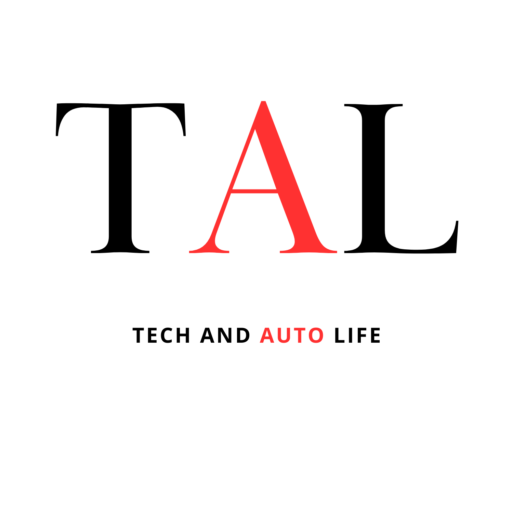
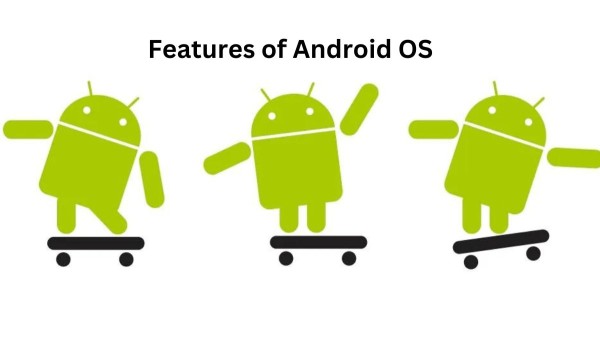
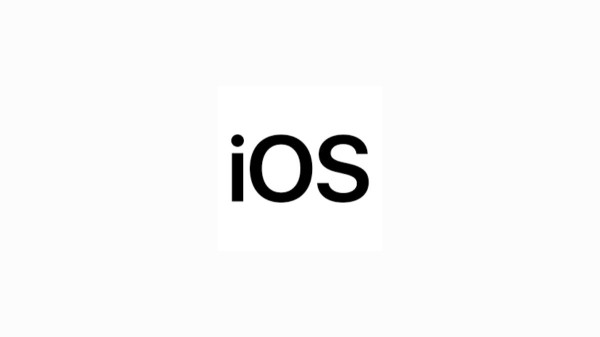
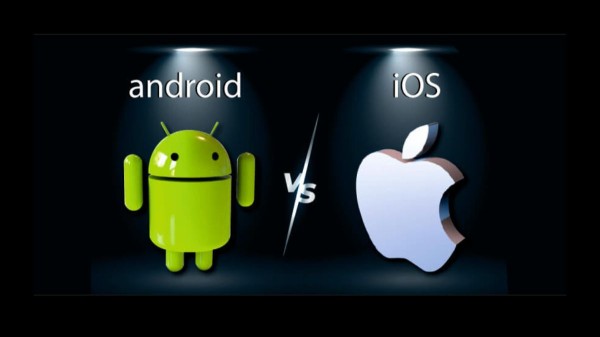
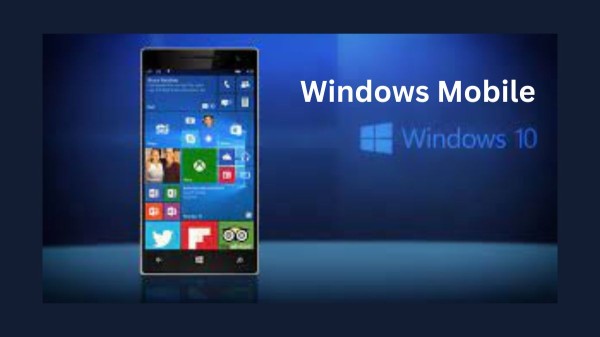
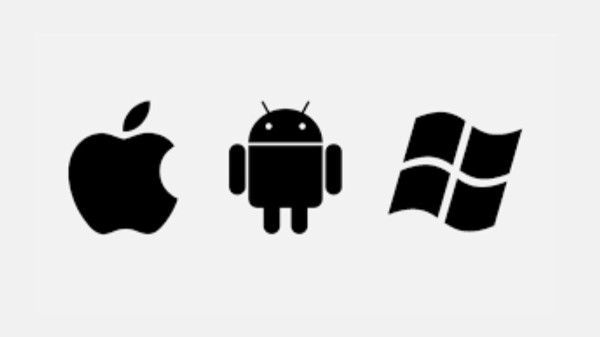
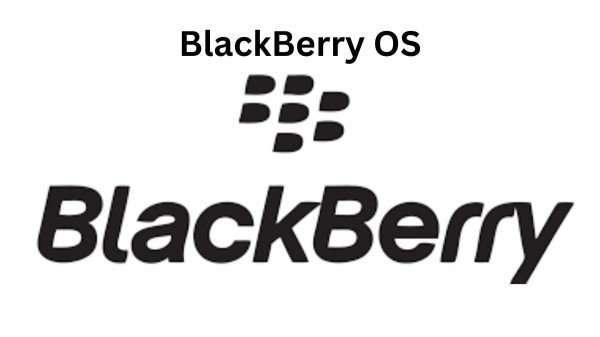
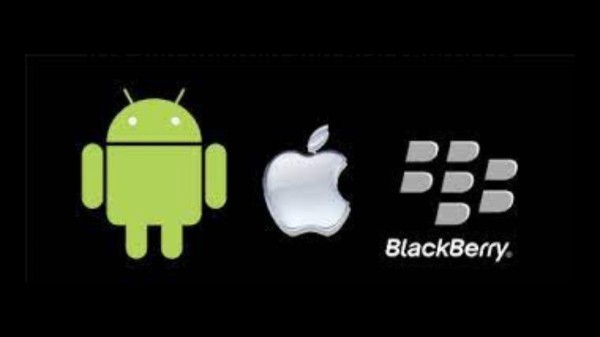
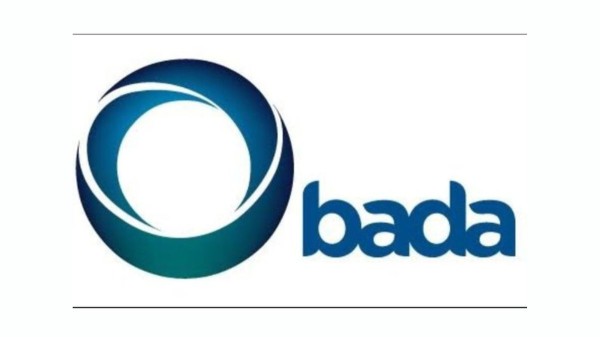
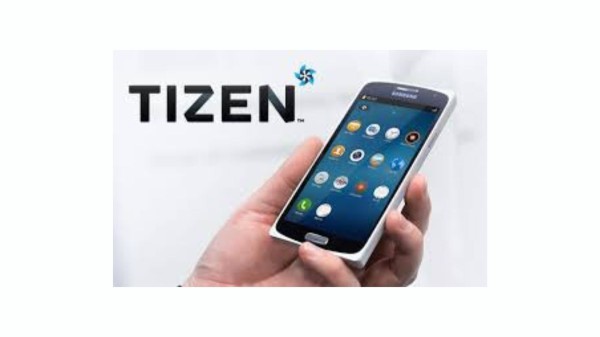
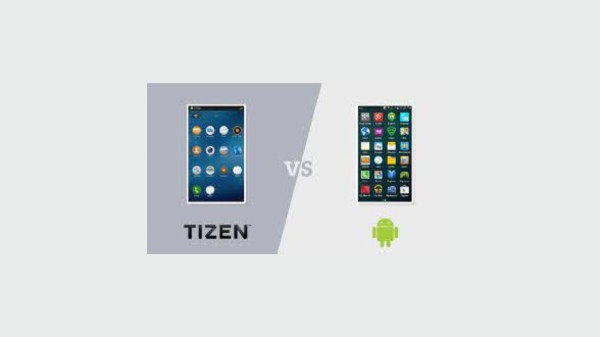
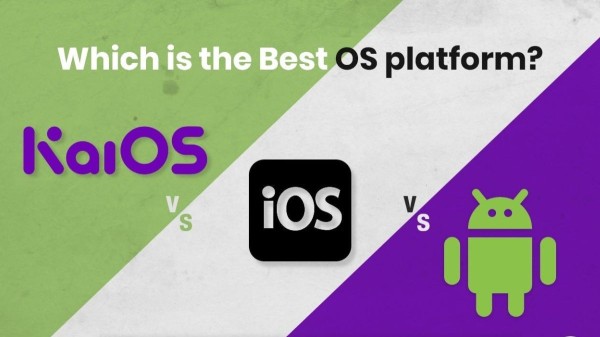
1 thought on “List of mobile operating systems in 2024”